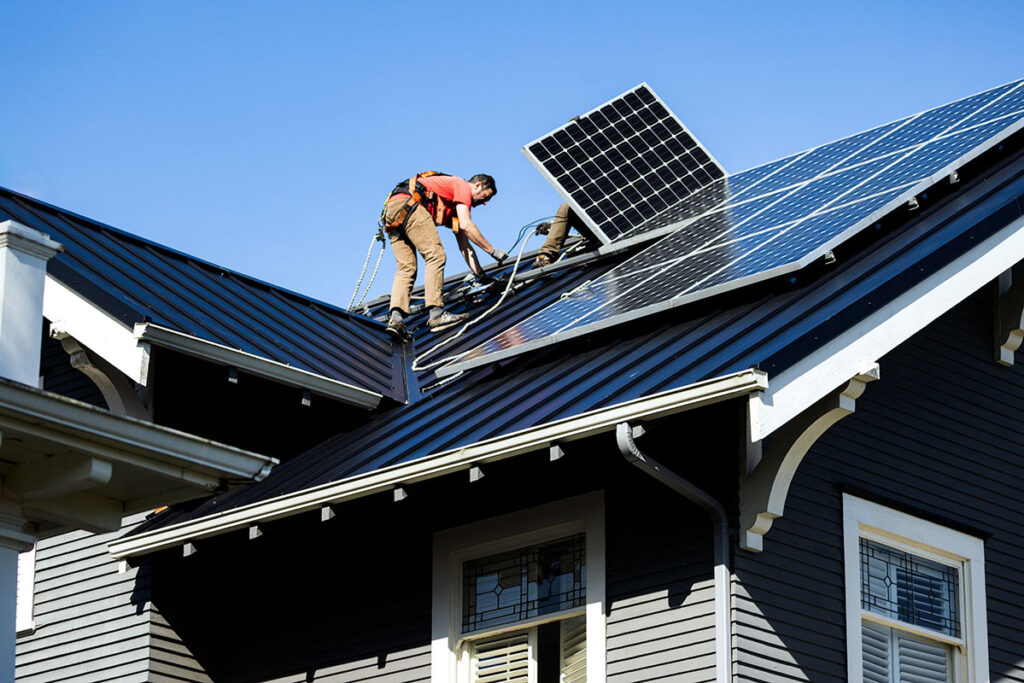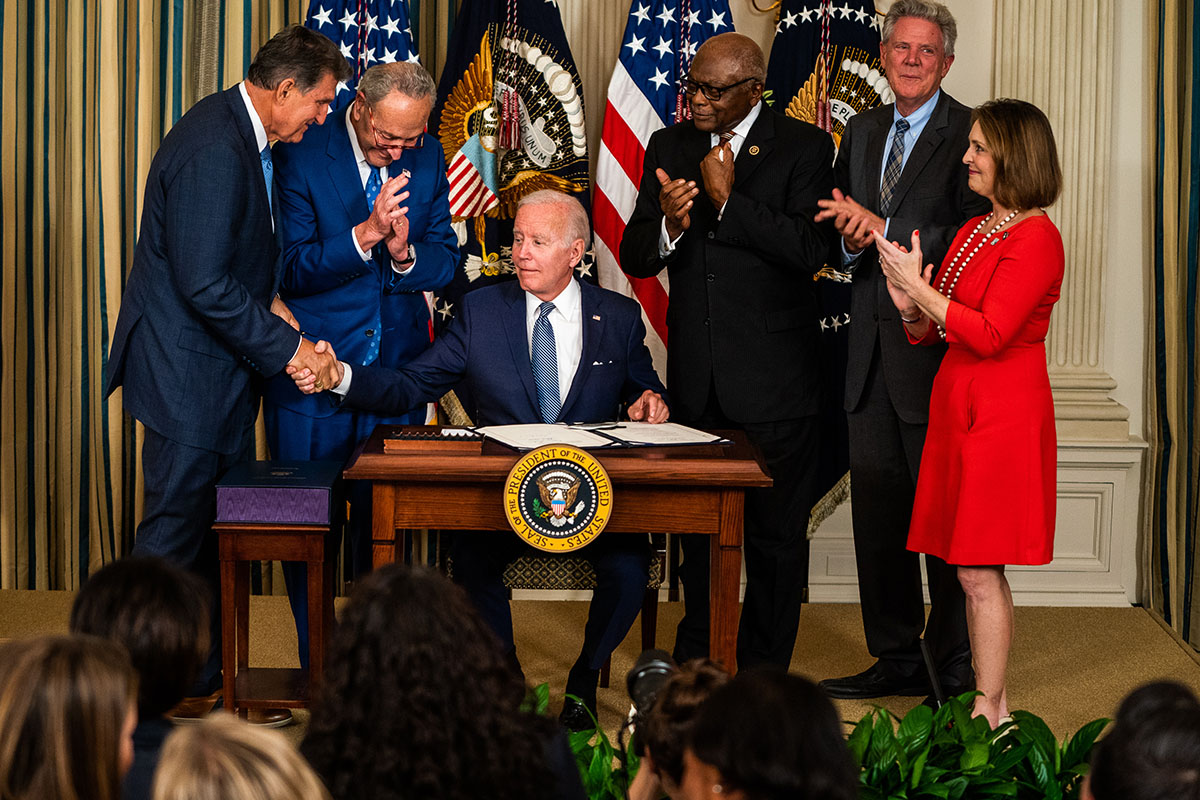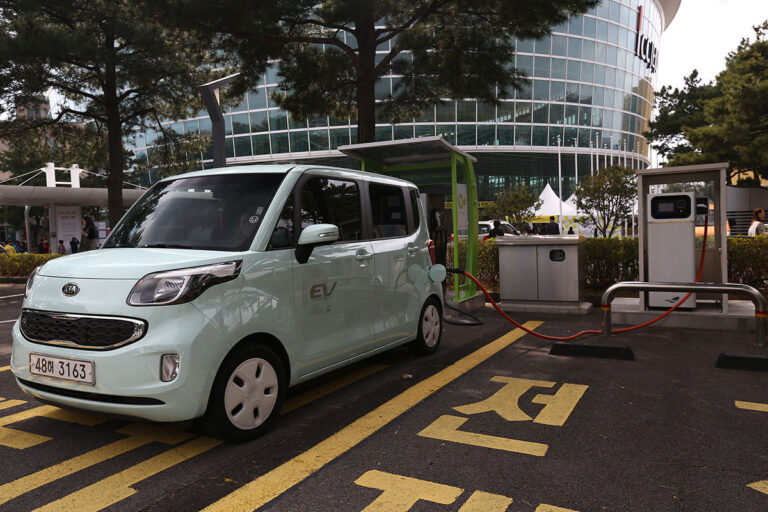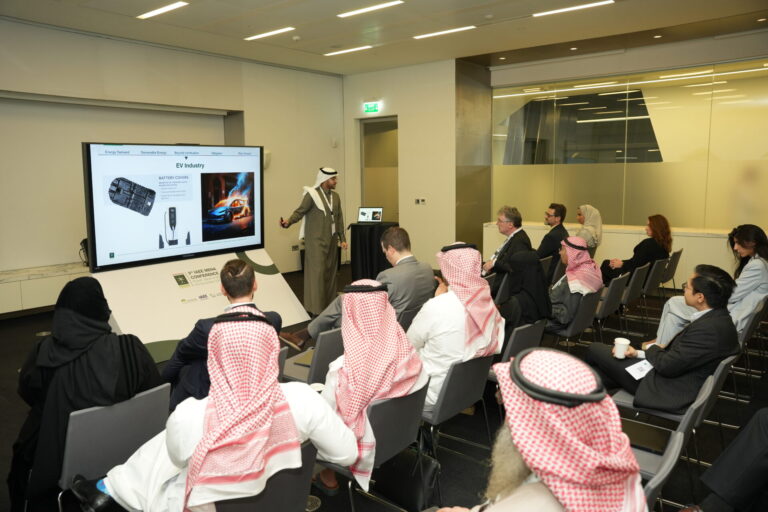In August 2022, former President Biden signed the US Inflation Reduction Act (IRA), which provides substantial investments to reduce energy costs and accelerate the transition to clean energy. Recognizing that buildings account for a significant share of US energy consumption and greenhouse gas emissions, the IRA includes tax credits and a range of other incentives and rebates to make energy efficiency and conservation measures more affordable. The initiative capitalizes on an investment of about $385 billion spread across several sectors, including building efficiency, clean energy and electricity transmission, manufacturing, transport and agriculture.
KAPSARC energy and environmental economist Fateh Belaid takes an in-depth look at the IRA, discussing how the United States has transformed federal support for clean energy and identifying ways other nations can learn from the experience.
What benefits are offered by the US Inflation Reduction Act?
The IRA allocates $48 billion, about 13% of its total budget, to enhance building and energy efficiency. The US Department of Energy estimates the IRA could help reduce US emissions by 40% by 2030. These savings are a combination of short-term and long-term efforts.
Most immediately, the financial incentives for homeowners to invest in energy efficiency measures aim to reduce the upfront costs, offering savings on bills, especially for low-income households. There is also a residential clean energy credit, which should boost uptake of renewable sources such as solar and wind, as well as solar water heaters, fuel cells and energy storage systems.
“In the longer term, wider adoption of these more energy-efficient technologies will decrease overall demand and reduce carbon emissions. It should also stimulate innovation and cost reductions in the sector, to create a more sustainable energy market.”
Fateh Belaid
In the longer term, wider adoption of these more energy-efficient technologies will decrease overall demand and reduce carbon emissions. It should also stimulate innovation and reduce production costs in the sector, to create a more sustainable market for residential clean energy technology.
What about rented accommodation?
One issue with energy efficiency measures is that many people are renting their homes, and so have limited incentives or authority to make changes. The IRA recognizes this challenge and includes measures to allow renters to also claim tax credits for specific energy-efficient improvements. This is significant as it empowers renters to reduce their energy bills and carbon footprint. Eligible improvements include plug-in window heat pumps, ductless heat pump clothes dryers and solar water heaters.

What are the stack-up measures mentioned in the Act?
The IRA allows people to combine multiple tax credits for a more significant financial advantage. This ‘stacking’ can significantly reduce the upfront costs of energy-efficient upgrades or clean energy technologies, making them more accessible to a wider range of households. This comprehensive approach can lead to more significant overall energy savings and higher reductions in energy bills. It should also drive the increased adoption of a broader range of energy-efficient technologies.
How does the Act address energy inequality?
The IRA promotes equitable access to energy-saving technologies through tax credits and rebates, which benefit marginalized communities in particular. This approach makes energy-efficient upgrades more affordable for low- and middle-income households, who often spend a greater proportion of their income on energy costs. It also directs funding toward projects in disadvantaged communities to mitigate energy poverty and improve overall environmental well-being. The IRA’s largest investment is the $27 billion Greenhouse Gas Reduction Fund, with 60% for disadvantaged communities. It provides $7 billion for zero-emission technology, $8 billion for emissions reduction and environmental justice in low-income areas: just under $12 billion for general emission reduction is available to all.
How does it influence jobs and employment?
The IRA supports the development of an energy-efficiency ecosystem, creating local jobs in construction, home maintenance, and clean energy sectors. Investments in clean energy infrastructure and building efficiency upgrades will drive demand for skilled workers in these fields. As well as encouraging innovations in building efficiency, it supports small businesses and contractors specializing in energy-efficient technologies. Importantly, it also supports initiatives to prepare the workforce for these emerging clean energy jobs, ensuring a skilled labour pool to meet growing demand.
What can other countries learn from the US experience?
The IRA’s approach offers several valuable lessons for other countries. It does a good job of combining incentives for consumers, businesses, and infrastructure upgrades. It addresses various barriers to energy efficiency and creates a multifaceted approach to achieving decarbonization goals.
“The IRA’s approach offers several valuable lessons for other countries. It does a good job of combining incentives for consumers, businesses, and infrastructure upgrades. It addresses various barriers to energy efficiency and creates a multifaceted approach to achieving decarbonization goals.”
Fateh Belaid
It also recognizes the social aspect of energy efficiency by focusing on affordability. Addressing energy costs alongside emissions reduction should help to ensure a just transition for low- and middle-income households. Other countries can also learn from the way the act stimulates innovation and creates new job opportunities. A major feature is the predictable funding streams for energy-efficiency programs. These provide stability for businesses and research institutions, and so encourage innovation. Other countries can consider strategies of this initiative to determine what might be transferable and adapt such lessons to their own unique challenges and contexts.
Have any challenges been identified? How can they be met?
The IRA also presents three major challenges. The first is addressing administrative complexity: The complexity of IRA interventions, including tax credits and rebate programs, could lead to delays and bureaucratic hurdles for participants. One solution is to streamline the application processes and use online platforms to improve access. This would better enable individuals and businesses to navigate the system and claim their benefits.
The second challenge is ensuring equitable access to IRA benefits across diverse socioeconomic groups. It’s essential to develop targeted outreach and educational programs, particularly for underserved communities. These programs could raise awareness about the IRA’s benefits, guide people through the application process, and address language barriers.
The third major issue is tackling the problem of workforce shortages and rising costs. The significant investment in building energy efficiency upgrades could lead to a shortage of skilled labor. One solution is to invest in job training programs to help guarantee there are enough workers to cover the expanding clean energy sector. This in turn may prevent cost inflation.

What other support is needed?
Continued financing is essential to ensure the long-term success of the IRA’s building energy-efficiency initiatives. It fosters a stable environment for businesses and individuals to invest, attracts private sector involvement, and promotes consistent progress toward achieving ambitious energy efficiency goals. Reliable finance helps to reduce market uncertainties and avoid inconsistencies in the availability and value of tax credits and rebates. It’s important to minimize both of these risks, to allow individuals and businesses to plan for and capitalize on the available incentives.
Reference
Belaid, F., Fikru M. How the U.S. Inflation Reduction Act Supports Energy Efficiency and Low-Carbon Buildings. KAPSARC Report 27 May 2024. | Article




